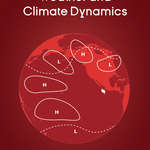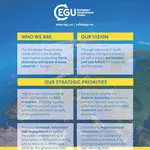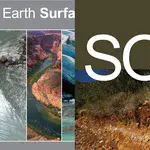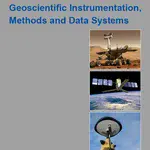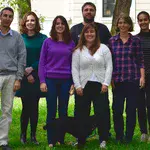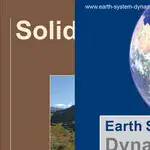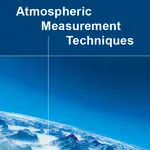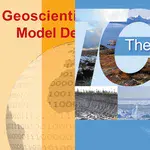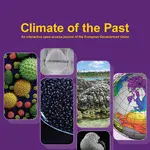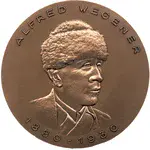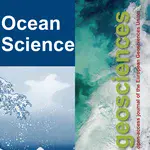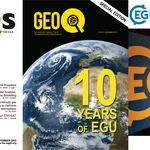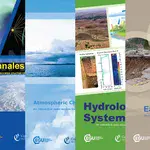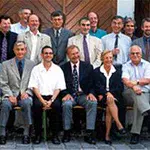Historical highlights
-
May 2022
-
April 2021
vEGU21 - the first fully online General Assembly
In response to the continuing impacts of the COVID-19 global pandemic, EGU hosts the 2021 General Assembly entirely online. vEGU21 welcomed 18,172 attendees from 135 countries, expanding the vPICO format to be fully interactive and online and providing a wide range of on-demand viewable sessions, presentations and events.
-
May 2020
EGU hosts Sharing Geoscience Online
In response to the global COVID-19 pandemic, the Union cancels its in-person General Assembly and instead hosts EGU 2020: Sharing Geoscience Online. A record-setting 22,376 participants from 134 countries engage in the week-long series of virtual interactions via commenting, live text chats and online keynote presentations to discuss the latest Earth, planetary and space science research during a period of unprecedented social isolation.
-
March 2020
EGUsphere, a fully interactive publishing platform, is launched
-
August 2019
Weather and Climate Dynamics
The EGU, in collaboration with Copernicus Publications, introduces Weather and Climate Dynamics (WCD), the 19th addition to its portfolio of peer-reviewed, open access publications. WCD is dedicated to research on dynamical processes in the atmosphere, including extreme weather events, links between the atmospheric water cycle and weather systems, and storm track dynamics.
-
June 2019
New EGU strategic priorities and executive office relocation
EGU adopts a new set of strategic priorities to guide the work of the Union’s Council, committees and staff through 2025. These priorities include the continued development and recognition of the annual General Assembly and EGU journals, expansion of the Union’s communications and outreach efforts, and ensuring equality of opportunity and diversity within EGU and more broadly in the geosciences. To support the growth needed to implement this new strategy, the EGU Office relocates to larger and more modern facilities in Munich’s outskirts.
-
April 2019
Geochronology
The EGU launched the open-access, two-stage, interactive journal Geochronology at the EGU General Assembly 2019. The journal is dedicated to the discussion and publication of high-quality research on the physical, chemical and biological processes used to quantify time in all environmental settings throughout Earth’s history.
-
8 April 2018
Geoscience Communication and Encyclopedia of Geosciences
The EGU launched two new publications at the 2018 General Assembly: a journal, Geoscience Communication (GC), and a compilation, the Encyclopedia of Geosciences (EG). GC is an open-access, two-stage journal with open review that covers a number of interdisciplinary topics focusing on the intersection between the Earth, planetary and space sciences and the social sciences and humanities. EG works as a compilation, a collection of articles that fills the gap between traditional review articles and online encyclopediae. It features scientific review articles written by experts in various fields of the geosciences and published in the already existing EGU open-access peer-reviewed journals.
-
4 September 2015
-
7 April 2013
Earth Surface Dynamics and SOIL
Through Copernicus Publications, the EGU launches the open access journals Earth Surface Dynamics (ESurf) and SOIL in April and December, respectively. ESurf publishes article on the physical, chemical, and biological processes shaping Earth’s surface and their interactions on all scales. SOIL is dedicated to research in the field of soil system sciences, being at the interface between the atmosphere, lithosphere, hydrosphere, and biosphere.
-
2011
-
2011
EGU signs memoranda of understanding
The EGU signs memoranda of understanding with the American Geophysical Union (AGU) in April and with the Aisa Oceania Geosciences Society (AOGS) in August to promote further cooperation between these organisations.
-
1 August 2010
-
2010
Solid Earth and Earth System Dynamics
Through Copernicus Publications, the EGU launches the open access journals Solid Earth (SE) and Earth System Dynamics (ESD) in February and March, respectively. SE features multidisciplinary research on the composition, structure, and dynamics of the Earth from the surface to the deep interior at all spatial and temporal scales. ESD publishes studies that take an interdisciplinary perspective of the functioning of the whole Earth system and global change.
-
2010
First EGU blog
The EGU launches its official blog, shortly before the 2010 General Assembly. Initially used only as a means to inform readers about the EGU annual conference, the blog saw the introduction of a new weekly feature (Imaggeo on Mondays) and general EGU information in 2011, and it was renamed GeoLog later that year. Now, it regularly brings readers information about the Union, its activities, and research in the Earth, planetary and space sciences. In the past few years, the EGU blogs home has expanded to include division blogs (featuring news and updated from some of the EGU scientific divisions) and network blogs (to foster a diverse community of geoscience bloggers). The blogs moved to blogs.egu.eu in December 2014.
-
2008
Atmospheric Measurement Techniques
-
June 2007
Imaggeo launched
The EGU launches an online open access geosciences image repository, called imaggeo. The database, which features geoscience photos and videos by scientists and photographers, changed to a new home at imaggeo.egu.eu in December 2013.
-
2007
The Cryosphere and Geoscientific Model Development
Through Copernicus Publications, the EGU launches the open access journals The Cryosphere (TC) and Geoscientific Model Development (GMD) in May and December, respectively. TC features papers on all aspects of frozen water and ground on Earth and on other planetary bodies. GMD is dedicated to the publication and public discussion of the description, development, and evaluation of numerical models of the Earth system and its components.
-
16–20 May 2005
First EGU co-sponsored meeting
The first geoscience meeting co-sponsored by the EGU, the first Alexander van Humbolt conference, takes place in Guayaquil, Ecuador. Since then, the EGU co-sponsored programme has expanded to include other conference series, as well as topical meetings, workshops, training schools and external meetings.
-
April 2005
-
2005
Climate of the Past and eEarth
-
25–30 April 2004
First EGU General Assembly
The first EGU General Assembly takes place in Nice, France, bringing together EGU members and other Earth, planetary and space scientists from around the world.
-
25–30 April 2004
-
12 February 2004
-
2004
Biogeosciences and Ocean Sciences
Through Copernicus Publications, the EGU launches the open access journals Biogeosciences (BG) and Ocean Sciences (OS) in March and November, respectively. BG is dedicated to all aspects of the interactions between the biological, chemical, and physical processes in terrestrial or extraterrestrial life with the geosphere, hydrosphere, and atmosphere. OS features articles on all aspects of ocean science: experimental, theoretical, and laboratory.
-
November 2002
EGU newsletter
Initially the newsletter and information service of EGS, launched in November 2002, the magazine The Eggs became the EGU newsletter after the merger between EGS and EUG was completed during 2003. The quarterly newsletter was revamped in late 2012, changing its format as well as its name (to GeoQ). A few years later, the EGU recognised the need to inform its members on a more regular basis and changed the newsletter, now called simply EGU newsletter, to a monthly email version, launched in January 2015.
-
October 2002
First EGU journals
The ownership of the EGS journals Advances in Geosciences (ADGEO), Annales Geophysicae (ANGEO), Atmospheric Chemistry and Physics (ACP), Hydrology and Earth System Sciences (HESS), Natural Hazards and Earth System Sciences (NHESS) and Nonlinear Processes in Geophysics (NPG) are transferred to the EGU.
-
7 September 2002
EGU founding
The European Geosciences Union (EGU) is established by the Councils of the European Geophysical Society (EGS) and the European Union of Geosciences (EUG) in the Platzl Hotel in Munich, Germany.
Founding members: Jan Backman, Jonathan Bamber, Ray Bates, Günter Blöschl, Lars Clemmensen, Max Coleman, Peter Fabian, Gerald Ganssen, Jean-Pierre Gattuso, David Gee, Fausto Guzzetti, Albrecht Hofmann, Jürgen Kurths, Yves Langevin, John Ludden, Arne Richter, Michael Rycroft, W. Schlager, Roland Schlich, Isabella Premovi Silva, Christopher Spotl, Håkan Svedhem, Hans Thybo, Bert Vermeersen, David Webb, Jerzy Weber, Richard Worden
Absent: E. Bard, A. Berger, A. Cazenave, M. Hapgood, C. Hawkesworth, A. Myrhe, J. Phipps Morgan, J. P. Valet
Pre-EGU era (before 2002)
The European Geosciences Union (EGU) was established by the merger of the European Union of Geosciences (EUG) and the European Geophysical Society (EGS) on 7 September 2002, with the final stages of this transition completed on 31 December 2003.




